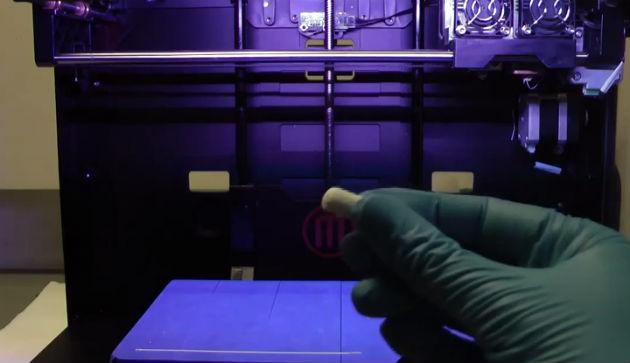 There have been tremendous strides made within the medical space thanks to 3D printing. We have seen bioprinting transform the way in which we view the future of organ transplantation, while the 3D printing of prostheses has changed the lives of hundreds of people worldwide. One other area, which has recently begun to show promise, is that of 3D printed custom medication.
There have been tremendous strides made within the medical space thanks to 3D printing. We have seen bioprinting transform the way in which we view the future of organ transplantation, while the 3D printing of prostheses has changed the lives of hundreds of people worldwide. One other area, which has recently begun to show promise, is that of 3D printed custom medication.
There have been several groups working on technology capable of printing out customized medication. However, one recent group of researchers from the University of Central Lancashire (UCLan) seem to be leading the way, and doing so in a rather affordable way. The team from the School of Pharmacy and Biomedical Science, led by Dr Mohamed Albed Alhnan, have created a special type of 3D printer filament consisting of drugs. The drug-polymer filament, as they call it, is used in place of traditional thermoplastic filaments such as PLA and ABS. The filament, can be used in almost any desktop 3D printer on the market which uses typical 1.75mm filament, and is harmless to the human body.
The researchers have been testing this application on a MakerBot Replicator 3D printer, fabricating theophylline tablets, sized how they choose.
“3-D printing has been embraced by lots of different industries but we have shown how this technology can be harnessed to improve medical care, providing low-cost, personally tailored medicines for patients,” stated Dr Mohamed Albed Alhnan.
Imagine waking up in the morning, hitting a button on your computer, and within minutes have your daily dose of life-saving medication. This is where we are likely headed according to researchers. The ability to print these drugs on affordable desktop machines could lead to cheaper rates on medication, as well as a convenience which would be a godsend to those patients unable to regularly leave their homes.
“Thanks to this technology, the invented system can provide medical institutions with a new option and maintain dosage form properties while accurately adjusting the dose with simple software order, something that was considered before to be costly and required experienced staff and dedicated facilities,” said Alhan. “Eventually, we hope to see that units can be kept at home for patients who continuously need to change their daily dose.”
According to UCLan, this technology could possibly be used by pharmaceutical companies as early as 2019, and may eventually be available in people’s homes within the next decade. Certainly there will be some regulatory hurdles to overcome before this happens, but such technology would enable patients to ensure exact dosages without being constricted to the most popular dosage sizes via pre-produced pills.
Check out the video below, provided by UCLan, of a MakerBot machine 3D printing a theophylline tablet.
Subscribe to Our Email Newsletter
Stay up-to-date on all the latest news from the 3D printing industry and receive information and offers from third party vendors.
You May Also Like
3D Printing Financials: Fathom Struggles in Financial Quicksand During Critical Transition
Facing a year of key transitions and financial pressures, Fathom (Nasdaq: FTHM) has filed its annual report for 2023 with the U.S. Securities and Exchange Commission (SEC). The document outlines...
Latest Earnings Overview for Australian 3D Printing Firms Titomic and AML3D
Australian 3D printing manufacturing firms Titomic (ASX: TTT) and AML3D (ASX: AL3) reported their financial results for the period from July to December 2023, marking the first half of their...
3D Printing Webinar and Event Roundup: April 7, 2024
Webinars and events in the 3D printing industry are picking back up this week! Sea-Air-Space is coming to Maryland, and SAE International is sponsoring a 3D Systems webinar about 3D...
3D Printing Financials: Unpacking Farsoon and BLT’s 2023 Performance
In the Chinese 3D printing industry, two companies, Farsoon (SHA: 688433) and Bright Laser Technologies, or BLT (SHA: 688333), have recently unveiled their full-year earnings for 2023. Farsoon reported increases...

































